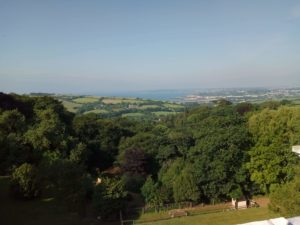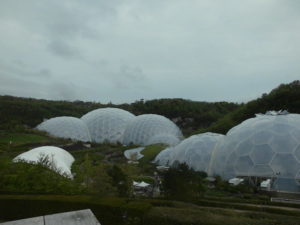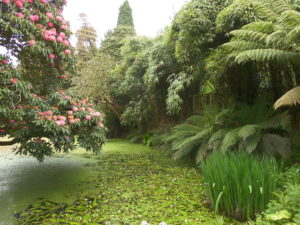Cornwall, England

Cornwall revisited.
When we were given the opportunity to visit Cornwall again, we jumped at the opportunity. Our timeshare had a week available in Trenython (pronounced Tren – I – thon) Manor which fitted right into our schedule, so we were very happy.
This manor house has been refurbished and turned into a hotel with surrounding cottages for dog lovers and people who prefer a kitchen. A car is a must to visit this area as there are so many little villages tucked away on the waters edge and down narrow laneways. Speaking of narrow laneways, one does have to learn to negotiate narrow lane streets which are actually two way, roads through town that are single lane, so when a delivery driver needs to unload his goods into a shop everyone behind has to wait until he is finished – patience is the required requisite of all drivers.

Little towns such as Mevagissey have car parks on the edge of town and visitors are requested to walk the short distance, through narrow winding streets, to the waters edge. And what did we find there? Beautiful white washed houses huddled together around a small harbour of brightly painted fishing boats.

These boats are either bobbing around on the high tide or sitting solid on the floor of the bay waiting for the tide to come in. This lovely village also houses a shop selling some of the best cornish pasties. A must have when in Cornwall.
The town that is on everyones lips at the moment is Charlestown. This town has a lock to hold the water in during low tide, because its precious cargo is tall ships which are used for movies and various TV shows – Poldark being the flavour of the month right now. We heard the ‘ you should have been here yesterday’ story. Supposedly the cast were there doing filming and the fan clubs were out in force.
Fowey (pronounced Foy) is a larger town which doesn’t loose it’s water at low tide as it is fed by the Fowey River. All these towns began their life around the 1300’s and lay claim to their history of pirates or privateers as they liked to call themselves.
Besides the quaint villages that dot this coastline the whole district has many industries, not the least of which is China Clay which is mined there. This white clay is prized for its purity and has been used for fine porcelain for over 200 years. This product, called kaolin, is now being used in the pharmaceutical, paper, paint and the cosmetic industry as well. So those bitter tablets that you take with a smooth coating to make them easier to swallow are more that probably coated in kaolin from Cornwall.
Behind the township of St Austell one can see very sharp white peaks, which are man made. The locals call them ‘the Cornish Alps’. Kaolin being decomposed granite, is finer than talcum powder and does not come pure from the ground, so for every one ton produced there is five tons of waste, hence the Alps.
 But Cornwall is not resting on its laurels, letting its history create the drawcard for all tourists. Two ‘must do’s’ are The Lost Gardens of Helligan and The Eden Project. These attractions go hand in hand. One should not visit one without the other.
But Cornwall is not resting on its laurels, letting its history create the drawcard for all tourists. Two ‘must do’s’ are The Lost Gardens of Helligan and The Eden Project. These attractions go hand in hand. One should not visit one without the other.
Especially if your tour guide is David Hogg of Castle Tours. His wealth of knowledge, having been involved with both projects for many years, is immeasurable. To have a local walk you through and explain how, what, when and why brings it all to life.
I know we’ve only scratched the surface of Cornwall, didn’t even make it down to Lands End, but one can only absorb so much information and see so many sights before the brain starts screaming – ENOUGH! Give me a break – please!